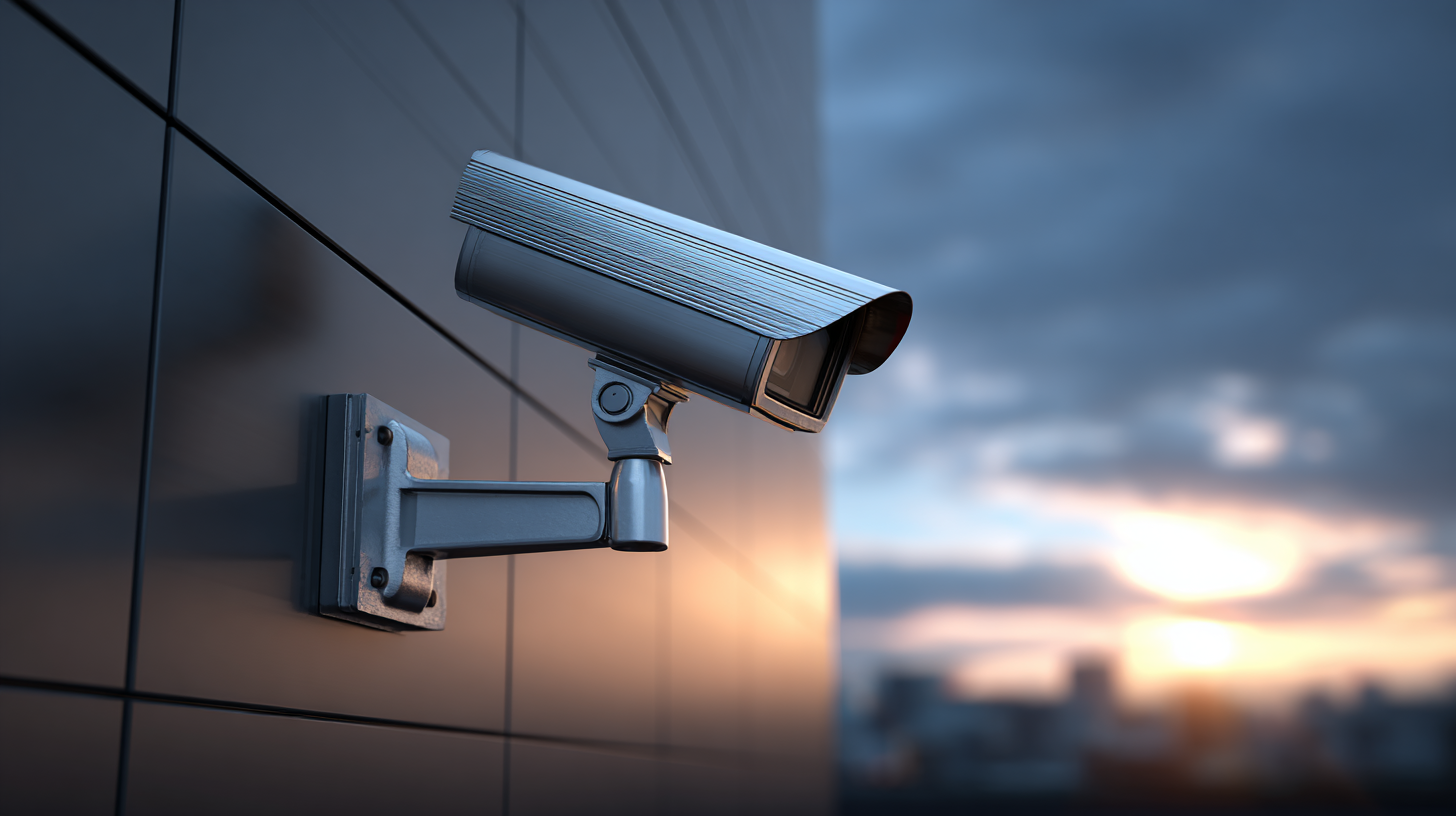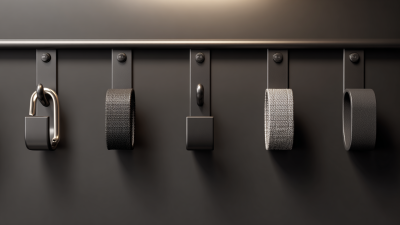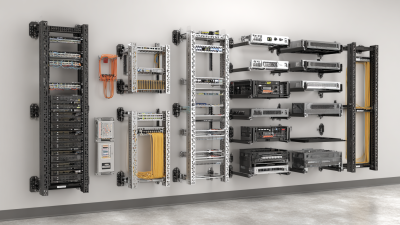Ultimate Guide to Selecting the Right Wall Mount Bracket for Your Global Sourcing Needs
In today's fast-evolving digital landscape, selecting the right wall mount bracket has become crucial for businesses engaged in global sourcing. According to a recent report from MarketsandMarkets, the global wall mount bracket market is expected to reach $5.4 billion by 2025, driven by the increasing demand for smart homes and interactive displays in commercial spaces.

With the surge in both residential and commercial installations, understanding the various types of wall mount brackets is essential for ensuring compatibility with a wide range of devices. This guide aims to equip you with tips and insights to navigate this essential decision, reflecting on the latest industry trends and innovations that can influence your sourcing strategy. Whether you are upgrading existing setups or starting new projects, making an informed choice about wall mount brackets can enhance functionality and aesthetic appeal in any environment.
Understanding Different Types of Wall Mount Brackets for Various Applications
When it comes to selecting the right wall mount bracket for your needs, understanding the various types available is crucial. Wall mount brackets are categorized primarily into fixed, tilt, and full-motion options. Fixed brackets are ideal for customers seeking a straightforward solution for mounting their TVs or equipment securely and without the need for adjustments—perfect for rooms where viewing angles are consistent. On the other hand, tilt brackets offer modest adjustment capabilities, allowing you to angle the screen downward to reduce glare, making them a popular choice for entertainment centers or rooms with elevated seating positions.
For those who demand versatility, full-motion brackets provide the maximum range of movement. These mounts allow for adjustments in multiple directions, offering flexibility in positioning. They are particularly suitable in multi-room setups or areas where viewing angles may vary due to the arrangement of furniture. Additionally, some designs incorporate cable management solutions, ensuring a clean and tidy appearance. Understanding these distinctions not only aids in selecting a bracket that meets your functional requirements but also enhances your viewing experience and the overall aesthetics of your space.
Ultimate Guide to Selecting the Right Wall Mount Bracket for Your Global Sourcing Needs
| Bracket Type | Weight Capacity (lbs) | VESA Compatibility | Tilt Range | Rotation | Application |
|---|---|---|---|---|---|
| Fixed Mount | 100 | 75x75, 100x100 | N/A | N/A | Home Theater |
| Tilt Mount | 120 | 100x100, 200x200 | -15/+15 Degrees | N/A | Office |
| Full Motion Mount | 150 | 200x200, 400x400 | -5/+15 Degrees | 360 Degrees | Gaming |
| Ceiling Mount | 80 | 75x75, 100x100 | N/A | N/A | Public Displays |
| Articulating Mount | 130 | 200x200, 300x300 | -10/+10 Degrees | 180 Degrees | Multimedia Rooms |
Key Factors to Consider When Choosing a Wall Mount Bracket
When selecting the right wall mount bracket for your global sourcing needs, it's essential to consider several key factors that will ensure optimal performance and compatibility.
First and foremost, assess the weight and size of the item you intend to mount.
Different brackets have varying weight limits and dimensions, so matching these specifications with your equipment is critical.
Additionally, the type of wall material plays a significant role; for instance, drywall, concrete, and brick require different mounting solutions and hardware to ensure stability and safety.
Another crucial factor is adjustability and mobility. Depending on the type of usage, you may need a bracket that allows for tilt, swivel, or extendable arms, giving you flexibility to adjust the angle for better viewing or accessibility.
Compatibility with various devices is also vital; ensure the bracket is suitable for your specific model to avoid any fit issues.
Lastly, consider the installation process—look for brackets that are easy to install and come with clear instructions, as this can save time and effort during setup.
By carefully evaluating these aspects, you can make an informed decision that meets your global sourcing requirements effectively.
How to Assess Weight Capacity and Size Requirements for Your Mount
When selecting the right wall mount bracket for your global sourcing needs, understanding weight capacity and size requirements is paramount. A significant report by AVIXA highlights that choosing the appropriate mount can enhance the stability of your display by up to 47%. This statistic emphasizes the importance of matching the mount's specifications with your display’s weight and size to prevent any mishaps during use.
In assessing weight capacity, it’s critical to check the manufacturer's guidelines, which often specify maximum weights that can safely be supported. For instance, a recent survey revealed that 30% of users reported issues related to inadequate weight support when they didn’t verify mounting specifications before installation. Moreover, ensure the dimensions of the wall bracket align not only with the display size but also with the intended viewing environment—optimal screen sizes typically vary from 50" to 70", depending on the room's layout and purpose. By prioritizing these assessments, you can make informed decisions that cater to both functionality and aesthetic appeal in your sourcing strategy.
Weight Capacity and Size Requirements for Wall Mount Brackets
Evaluating Material Durability and Design Aesthetics in Wall Brackets
When selecting wall mount brackets, evaluating material durability and design aesthetics is paramount. According to a report by Freedonia Group, the demand for wall mounts is projected to increase by 4.7% annually, driven by evolving consumer preferences for home aesthetics and functionality. One of the most frequently used materials in the production of wall brackets is steel, renowned for its superior strength and resistance to wear. A study from the American National Standards Institute (ANSI) emphasizes that steel brackets can support weights exceeding 100 pounds, making them an ideal choice for heavy-duty applications.
On the aesthetic front, the design of wall mounts has become increasingly significant. With the rise of minimalistic decor trends, consumers are now favoring brackets that seamlessly blend with their interior. Research by MarketWatch indicates that over 60% of consumers believe that the look of hardware is crucial when making a purchase decision. Manufacturers are responding by focusing on finishes like matte black and brushed nickel, which not only enhance the aesthetics but also contribute to the overall durability by reducing wear and corrosion. Therefore, selecting products that marry durability with visual appeal is essential for satisfying modern sourcing needs.

Tips for Installing Wall Mount Brackets Safely and Effectively
When it comes to installing wall mount brackets, safety and effectiveness should be your top priorities. First, it's crucial to select the appropriate type of wall mount for your specific needs, whether it’s for a television, monitor, or shelf. Assess the weight and size of the item you will mount and choose a bracket that can adequately support it. Additionally, make sure to check the compatibility with your wall type, as mounting on drywall versus concrete or brick requires different anchors and tools.

Before you begin the installation process, ensure you have the necessary tools, including a stud finder, level, drill, and appropriate screws. Finding studs in your wall is essential for anchoring your mount securely. Once you’ve located the studs, mark the drilling points clearly. Using a level during the installation will help you achieve a straight and aesthetically pleasing mount. Finally, always double-check that everything is tightened correctly and give the mounted item a gentle tug to confirm stability before fully using it. By following these steps, you can ensure a safe and effective mounting experience.
Related Posts
-

How to Maximize After-Sales Support While Reducing Repair Costs for the Best Storage Trays
-

Exploring Innovative Mounting Hardware Solutions for Every Application
-

Exploring Innovative Industry Applications for the Best Wall Mount Hooks
-

How to Choose the Best Wall Mount Racks for Maximum Space Efficiency and Organizational Impact
-

Exploring the Future of Best Storage Trays in 2025 Technology Trends and Innovations
-

Reliable Quality Storage Solutions from China for Global Use in Efficient Rack Systems
